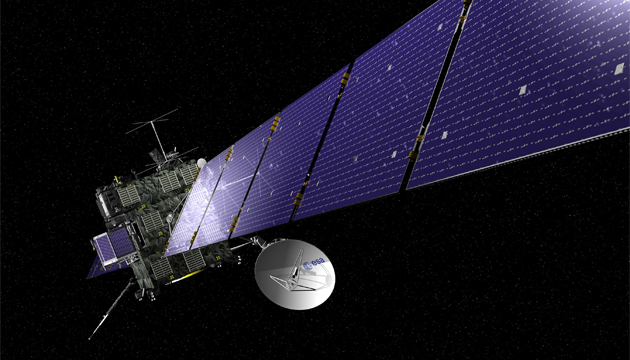On Monday, far beyond the orbit of Mars, an alarm clock went off and a robot began the slow process of waking up after a long, cold sleep. The European Space Agency’s Rosetta spacecraft is now awake and on final approach to its target, the comet 67P/Churyumov–Gerasimenko, which it will catch up with this May.
Rosetta was launched back in 2004 and has spent the last ten years conducting fancy “gravitational slingshot” maneuvers around the Inner Solar System designed to boost its speed. By making a series of close flybys of planets (three of Earth and one of Mars), Rosetta acquired some of their momentum—not unlike how a discus thrower flings a discus to higher speed by imparting a bit of their own momentum as they spin around.
The boost to Rosetta’s velocity was sufficient to fling it almost to the orbit of Jupiter, about five hundred million miles from the Sun. It was at this point, in 2011, when the solar-powered Rosetta spacecraft went into hibernation, the strength of sunlight at that distance not sufficient maintain full power.
Rosetta’s mission in the months ahead will feature feats of comet exploration that have never been done before.
Right now Rosetta is over 5 million miles from the comet, but will close the gap to little over a million miles by May.
